Presentation
Right gluteal pain.
Patient Data
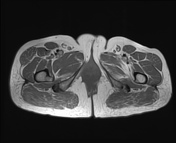

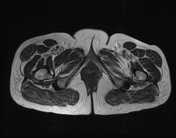



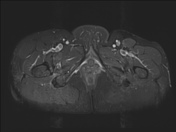

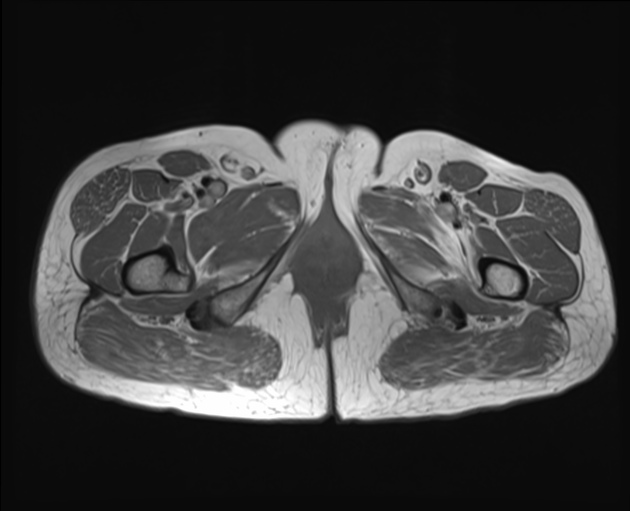
MRI images show narrowing of right ischiofemoral space (distance between inner surface of lesser trochanter and ischial tuberosity) measuring 7.9 mm in diameter. There are STIR hyperintense signals in right quadratus femoris muscle. These features are consistent with right ischiofemoral impingement syndrome.
Left ischiofemoral space and left quadratus femoris muscles are normal.
Visualized sciatic nerves appear normal.
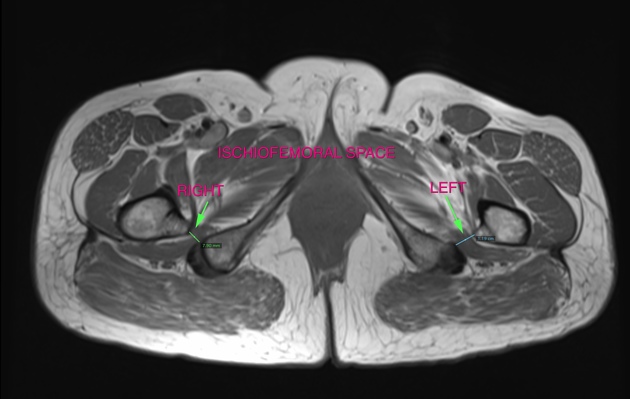
Annotated image shows the level where the measurement of ischiofemoral space should be taken. In this case, the right ischiofemoral space is seen reduced as compared to left.
Case Discussion
Ischiofemoral impingement syndrome occurs due to impingement of quadratus femoris muscle between the ischium and lesser trochanter of femur, resulting in muscle edema.
The space can be narrowed due to osteophytes, old fractures with callus formation, bone or soft tissue tumors and sciatic nerve tumors.




 Unable to process the form. Check for errors and try again.
Unable to process the form. Check for errors and try again.